If you’re into Bikepacking, you’ll sooner or later come to the question of overnight stays or camping. And then it’s not far and you’re faced with the decision between tent or bivy sack (or tarp or hammock, but we’ll leave that aside).
I’m actually a classic “tent person” and will remain so – that is for sure. But there were two reasons why I took a closer look at bivy sacks as an alternative or addition to my set-up:
- Firstly, in Germany (and certainly in other countries) it is much easier to camp wild when out and about than to camp with a tent. With a few exceptions, this is forbidden, but with a bivouac sack you don’t tend to get into trouble here. That’s why I’ve been thinking about this alternative for a while.
- On the other hand, I came across bivy sacks through my participation in Bikepacking Races about the need to minimise luggage. So I rode the Atlas Mountain Race with only a bivy sack.
In preparation of my trips this year, the Mainfranken Graveller and the Bohemian Border Bash Race, I am now also faced with the decision between tent or bivy sack.
Bivy sacks are:
- lighter
- more compact
- quicker and easier to unpack and pack
However, they also have disadvantages:
- They don’t really offer protection from bad weather
- Are not really comfortable
- Offer less space and room to spread out
- Very often form condensation
From my point of view, they are therefore more suitable for ultra-light bikepacking tours, where you can either stay in shelters or only need light protection and extra insulation due to the rather dry weather.
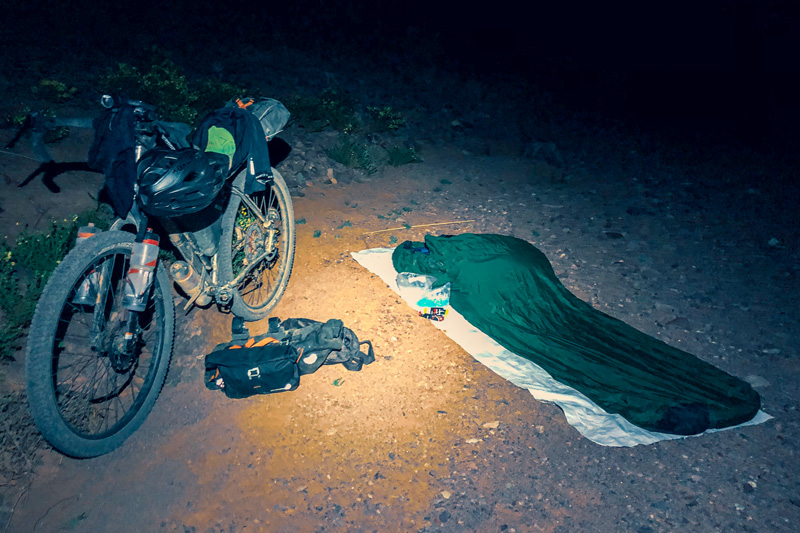
Theory is one thing, practice is another. I first bought the Alpkit Hunka bivy sack and had good experiences with it in Morocco. It’s not the lightest bivy sack, but in dry weather and temperatures around 0 degrees in Morocco it hardly formed any condensation, if any at all. I can’t fit a sleeping pad in the normal Hunka, so I got the Hunka XL, which is big enough to take the sleeping pad as well as the sleeping bag.
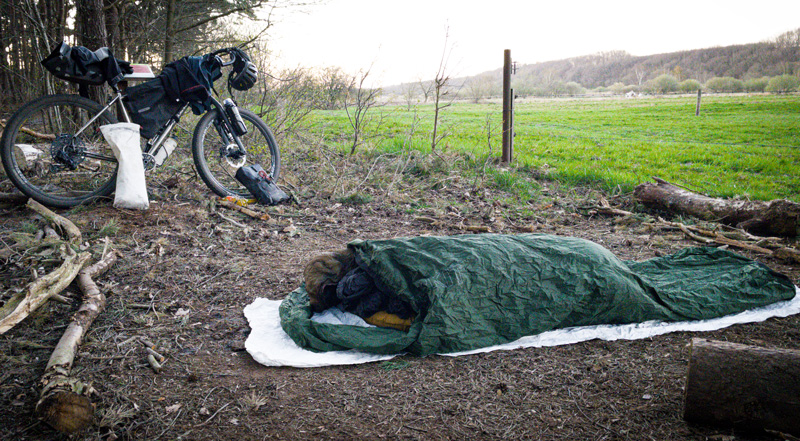
I actually feel comfortable with bivouac sacks, but once in summer I had massive problems with mosquitoes. No spray helped, and neither did closing the hood of my sleeping bag so much that only my nose peeked out. It was simply too warm and uncomfortable.
So I looked for a solution that was as practical as a bivouac sack and still protected the head area against light rain and especially mosquitoes if necessary.

And I found this solution in the Outdoor Research Helium Bivy. It is 208cm long, has a foot width of about 48cm and a shoulder width of 66cm. The floor of the Helium is made of nylon, the outer material of waterproof Pertex material. The seams are sealed and the bottom is TPU-laminated, according to the manufacturer. This makes it waterproof, which I can confirm. From time to time, however, I take an ultra-light Tyvek sheet with me, which I put under the bivy sack. But that wouldn’t be necessary, because the groundsheet is quite stable and deflects sharp objects quite well.

The special thing about the Helium, however, is the head area, which is set up with a pole, creating space for a mosquito net and more room in the head area, like in a very small tent. I usually have a small cord with me as well, because there is a small loop on the pole guide that I can use to fix the pole construction to a branch or similar. But that’s not really necessary, because the pole stands on its own, especially when you’re lying inside.
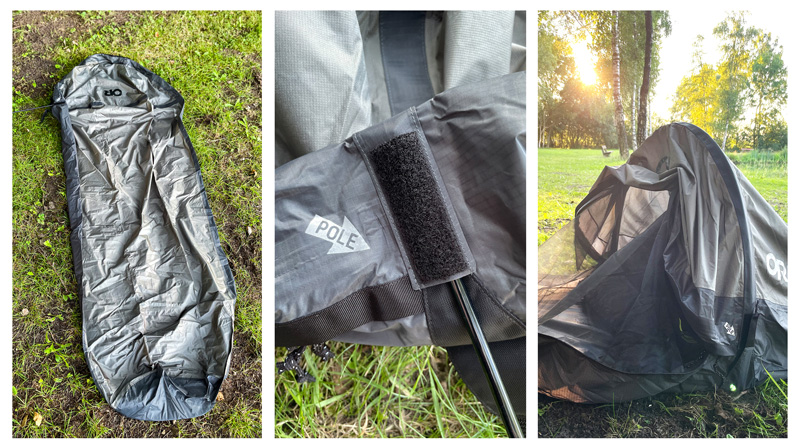
At the foot end there is also another loop on one side through which you can put a peg to fix the bag to the ground. This can help a little when getting in and out, but is not really necessary.
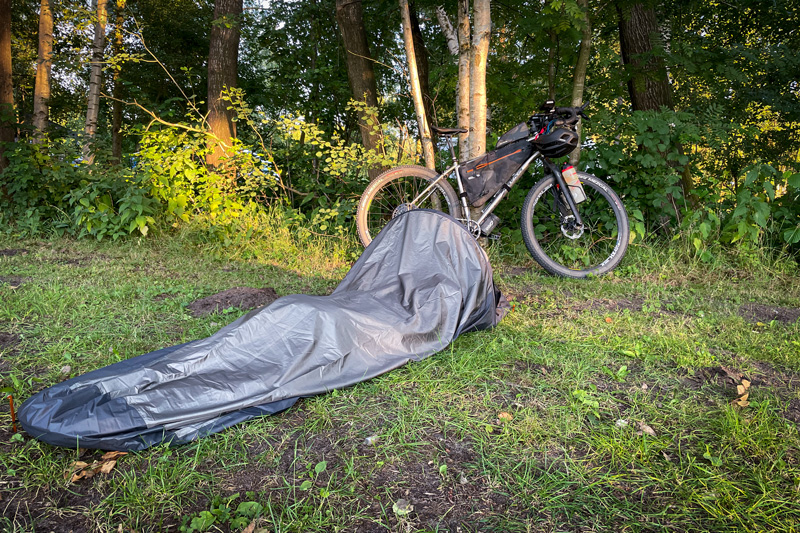
Bivy sacks are anything but comfortable. They are primarily practical emergency solutions. So getting in or out is always a small act. Once inside, however, the necessary valuables and a few clothes fit well in the space at the head. I often put my things in a pack sack as a pillow in the head area, and usually put my cycling shorts, jersey and jacket to the right and left of the sleeping bag.
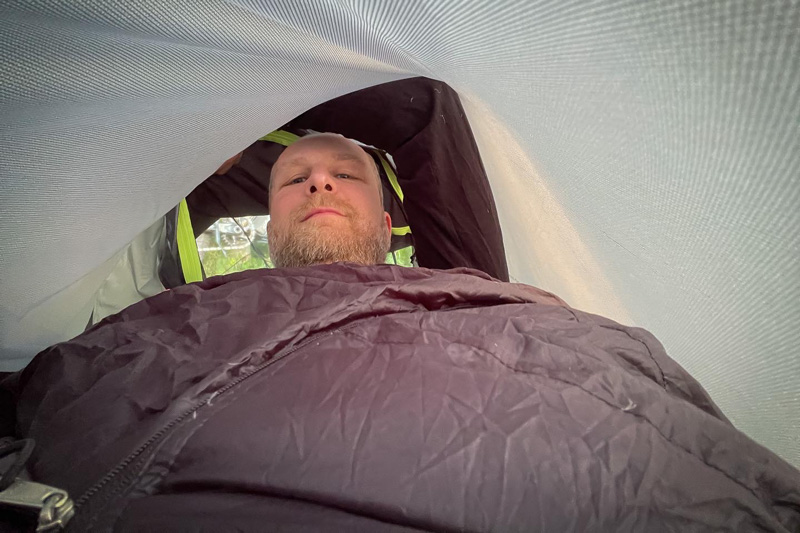
Now you can either put on the mosquito net or close the bivouac sack completely in the head area – for example if it is raining. However, you should bear in mind that the bivouac sack closes very tightly, which is why you should always leave a small gap open so that you don’t get into trouble due to a lack of oxygen.
The sleeping pad and sleeping bag fit well in the Helium, but the cover of the bivouac sack is naturally attached. This means that the moist and warm air from the sleeping bag hits the bivy sack shell directly. And even though Outdoor Research talks about a breathable shell, in practice this often ends up with a damp or wet sleeping bag. In addition, if the Helium is tightly closed, the breathing air can no longer escape easily, which in turn ends in massive condensation.
Moisture also occurs in the tent, but is usually less of a problem there because of a double-walled construction and the greater space and better ventilation.
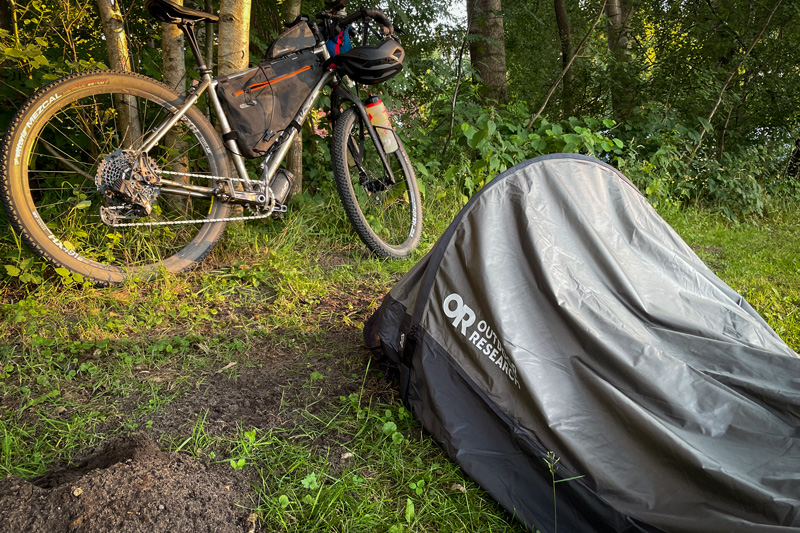
In summer I don’t often have problems with condensation in the Helium, also because a bivouac sack is not really necessary. It’s enough to just lie down on the mat. I was out in winter with the Helium, at 5 degrees, stormy and rainy. I woke up at night because it was “raining in”. I had only pulled up the mosquito net and then closed the bag in the head area accordingly. This in turn resulted in condensation from breathing air, and there was also a high level of humidity. The result was that I then just lay down with the wet sleeping bag on a nearby covered rest area table, which was more pleasant and the sleeping bag also dried due to the wind.
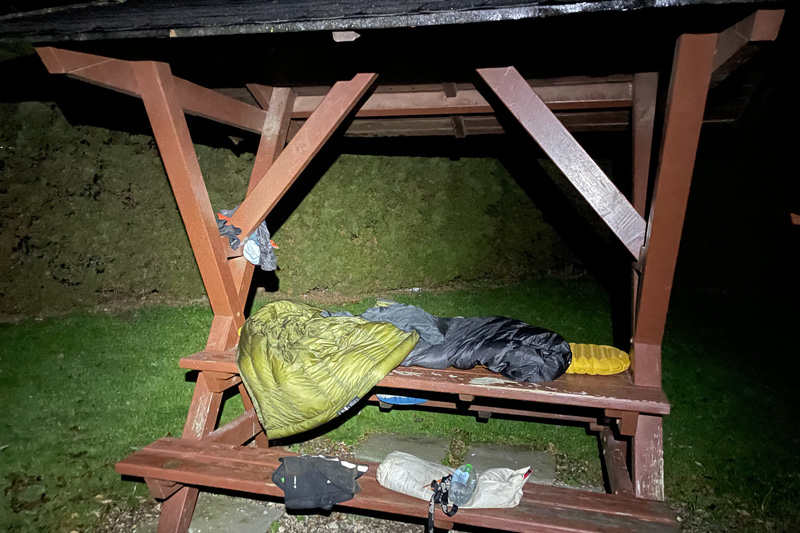
It also took a long time for the Helium to dry inside. You have to take that into account, because the condensation water stands inside and doesn’t run off. That’s why the bag has to be turned over to dry properly.
So you see, everything is just not right. And when you look at the price of about 230 euros, you do wonder. But as you know, I prefer to be informed rather than just have an opinion, which is why I bought the bivouac sack.
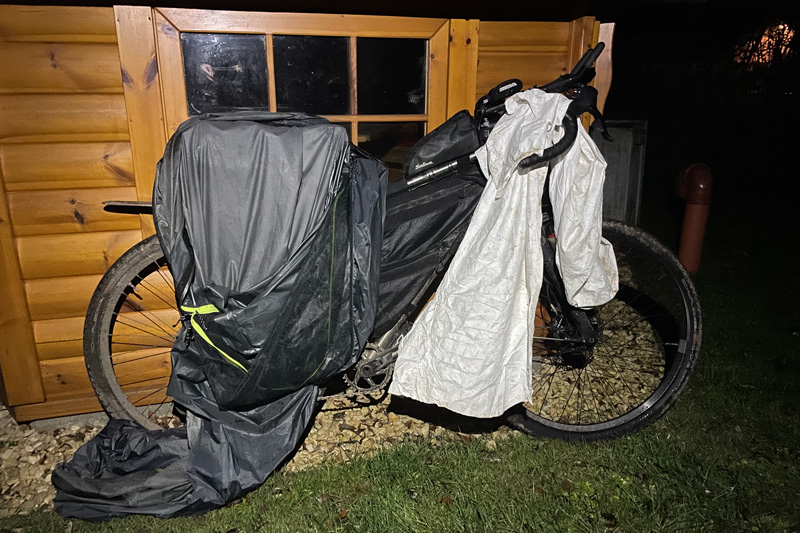
It performs its mosquito-protection function, but you have to take into account the disadvantages of condensation water and the rather limited practicality when sleeping.
Max Riese rode the Silk Road Mountain Race with the OR Helium. He has my respect for that. But he also wrote me on Instagram that he likes the Helium and appreciates the mosquito net. But he also had to deal with a lot of condensation and is still looking for the ultimate solution.
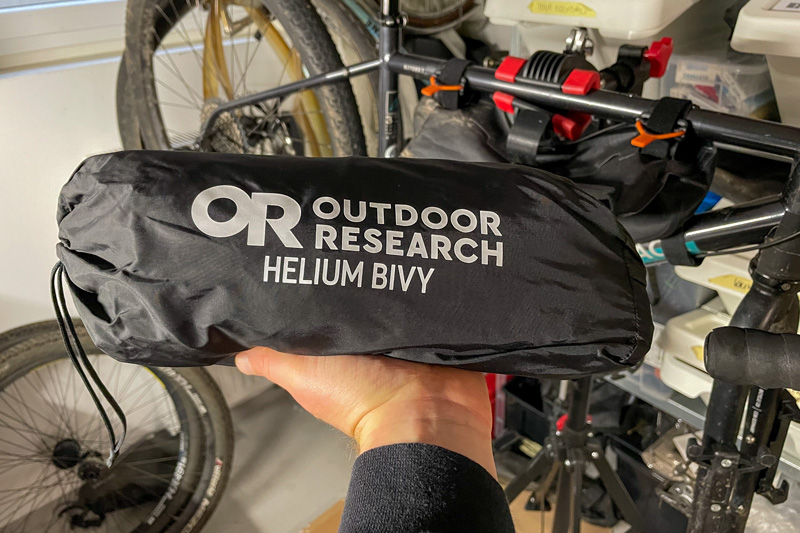
What speaks for the bivy sack is the low weight of only 503g and the small pack size (approx. 30 x 10 x 8 cm). This means that the Helium fits in the top compartment of my frame bag, for example.
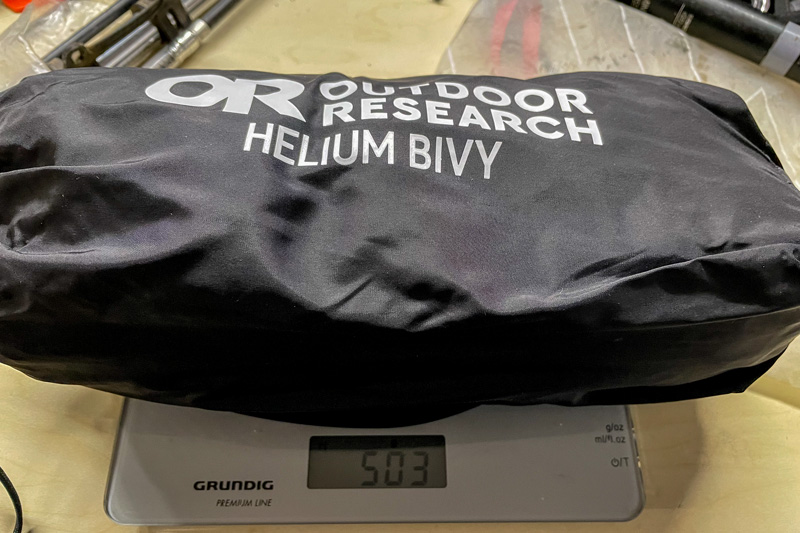
But somehow I’m more of a tent person. There are now also 1-person tents that don’t really make a difference to the Helium in terms of weight. For example, the Nordisk Lofoten 1 with around 500g or the MSR Carbon Reflex 1 with 790g and much more space than a bivy sack. Nils Thomsen has this and was very taken with it at the Bohemian Border Bash Race. In Morocco at this year’s Atlas Mountain Race he had the OR Helium with him and also had condensation experiences.
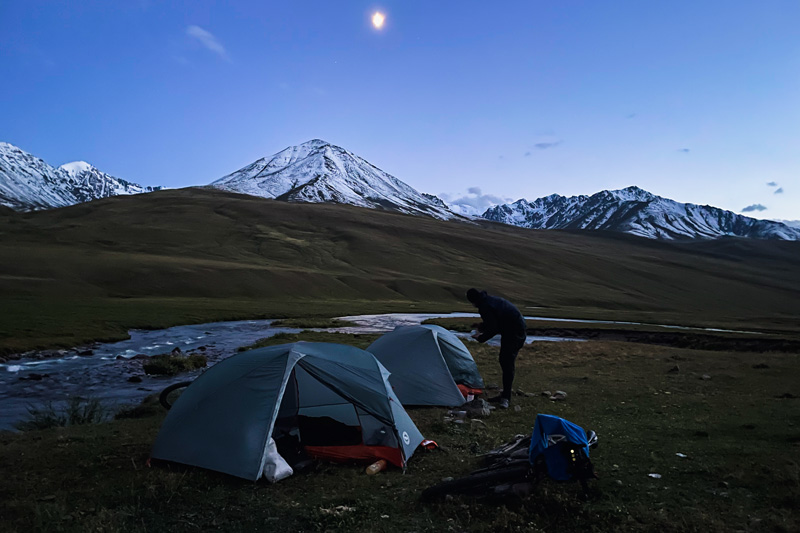
I have the Big Agnes Copper Spur HV UL1 Bikepack, which weighs about 1,200g. I left out the heavy stuff sack of the tent and come to about 1,100g. That would be a difference of about 600g compared to the helium. But in return I have a shelter where I can sit comfortably even in bad weather, change clothes and pack my stuff before going out in the rain or snow. Of course, it takes up a bit more space in terms of pack size, but the gain in comfort is worth the extra weight to me.
But I still know that when I pack for the race, I’ll have to decide again whether to use a bivouac sack or a tent. And then – depending on the weather forecast – I might decide on the bivy sack after all. Or not?
What’s it like for you? Team bivouac or team tent or team tarp or team hammock or team without everything?


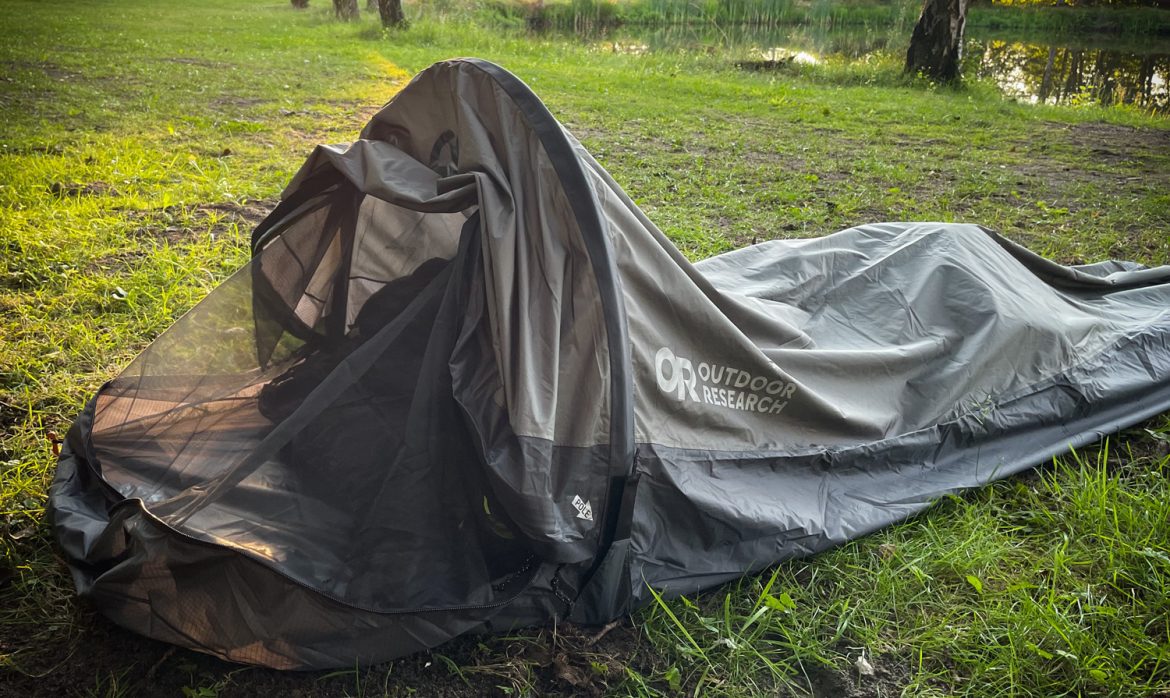

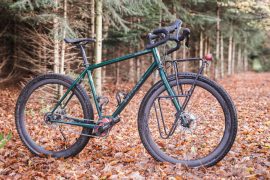
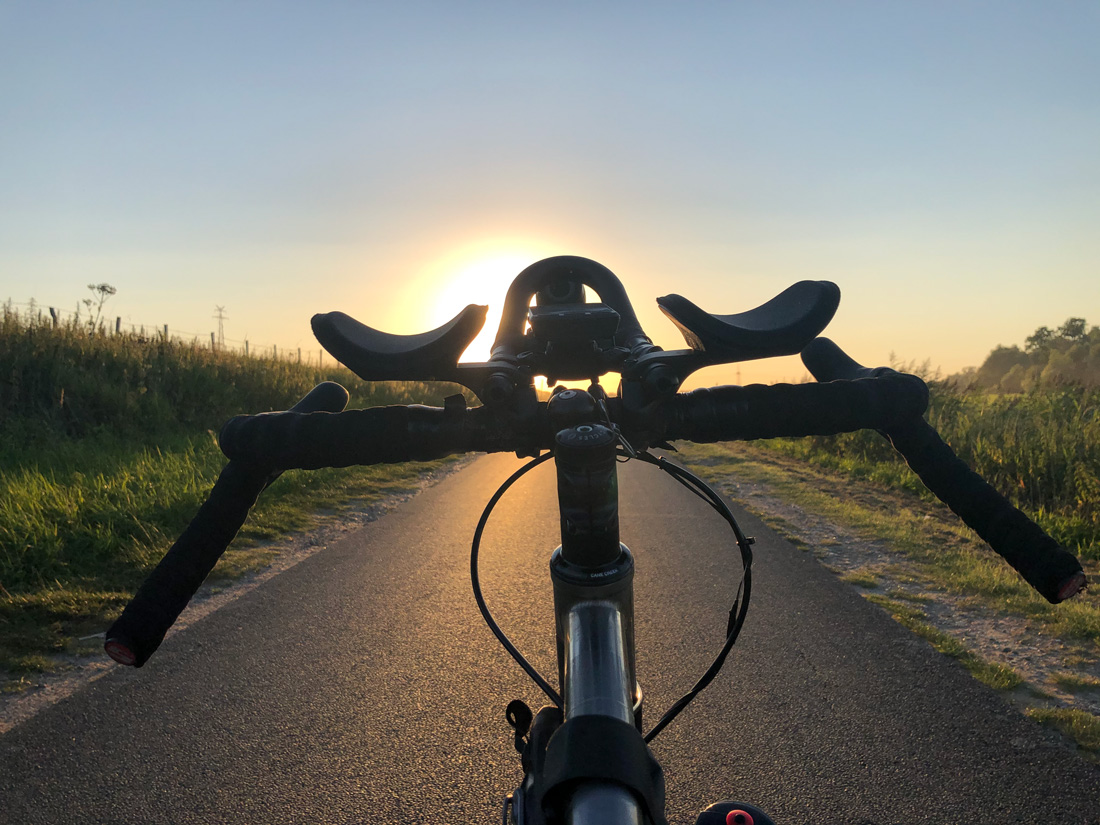
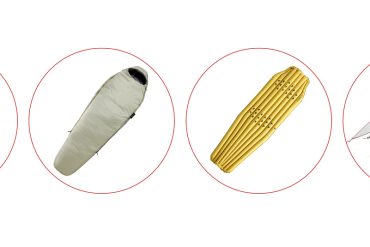
I thought it was me having condensation problems and simply not knowing how to use the Helium properly, so it is a relief to see that I am not alone.
I took the Helium sack to UK during summer, and didn’t have much of a problem as I was mainly sleeping with the hood open (just the net against midges), only issue was one really rainy day when I got flooded inside the sack, because it is definitely not done for rainy UK days.
I didn’t realized about condensation until now, during a winter trip, when I closed again completely the hood (it was too windy and snowing) and suddenly it was raining on my face and frost inside. So, I had to open the biwy and dry it out with a towel (at – 10 C in the middle of the night, wasn’t too much fun). So, now I am still hesitant if there are any gains on not having a tent, except for not needing to set it up.
Team bivouac here. Cheap (100€) but heavy (900g) Carinthia military version. Good things are it is made of GoreTex so breathability is amazing. Never ever had condensation issues and you can breathe normal even if completely closed. It does not have a pole or bug net, so I take a small net with me I can wear over my face or just close it. It is huge, so any bags in the foot box is no problem.
Keep in mind that a bivouac bag with a tent pole is a tent in German law.
Anyway, will get myself a lightweight tent at some point. The goal of it being around 300g with something like a zpack plex or similar construction makes that quite an expense.